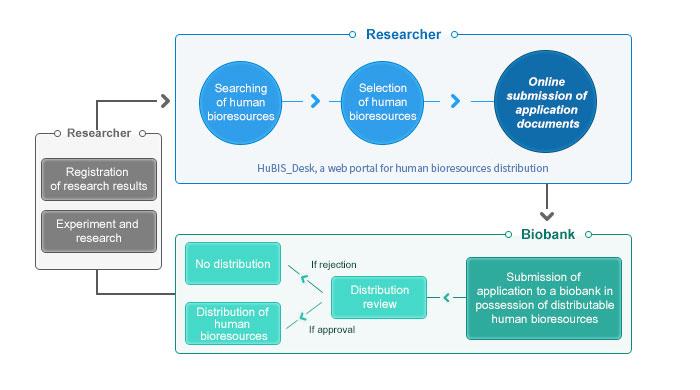contents area
Guide to Distribution
- Date2019-11-04
- Update2021-04-15
detail content area
How to Use Bioresources (in Korea)
-
1. Eligible organizations (in Korea)
A research project that is conducted for public interest, funded as a national development initiative and conducted by national organizations, government-funded institutions, and/or private research centers may gain distribution access to human biospecimens
* Currently Korean researchers living in Korea can apply for human bioresource distribution.
-
2. Required documents
Distribution application, written pledge, research plan, assessment by the Institutional Review Board, and other related documents
-
3. Types of human bioresources to be provided
-
National Biobank of Korea (NBK) :
Biospecimens - DNA, LCL, LCL-DNA, Serum, Plasma, Urine
Data – Genetic data, Epidemiological data -
Regional Biobanks :
Biospecimens – Serum, Plasma, Buffy coat, Tissue, etc.
Data – Clinical and epidemiological data
-
-
4. Costs for human bioresource distribution
In accordance with the Bioethics and Safety Act, distribution cahrge may request to cover the preservation and provision of human bioresources.
-
5. Procedure for human bioresource distribution

- Operations of the Distribution Review Board
- The NBK and the 17 Regional Biobanks have each formed and operate a Distribution Review Board for the purpose of the fair and transparent distribution of human bioresources.
Distribution Review Boards consist of experts from different fields, such as epidemiology, genomics, and bioethics, and performs the role of approving or denying distribution after a thorough review of the purpose of the study in which the biospecimens are to be used and the amount of biospecimens requested.
